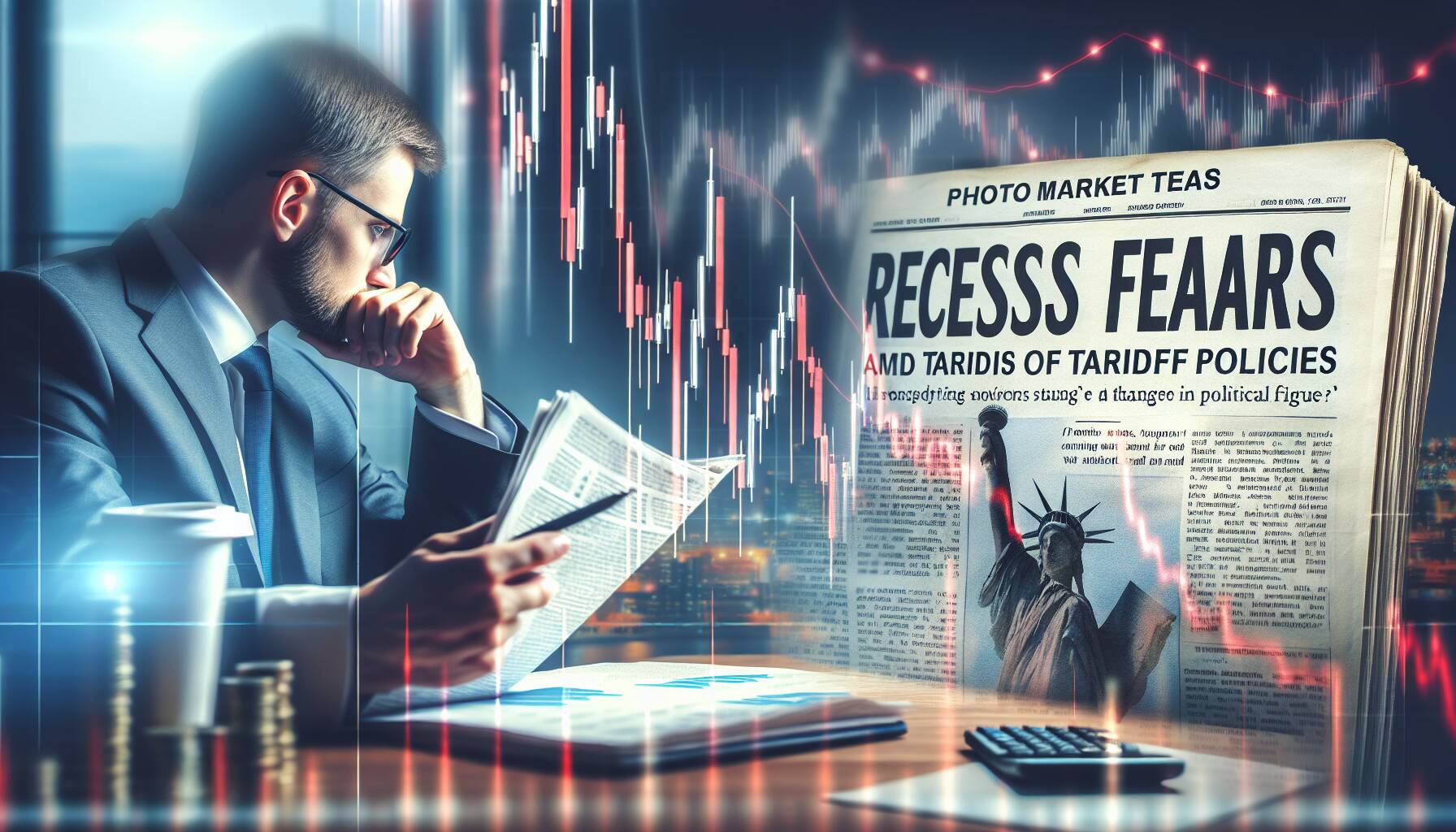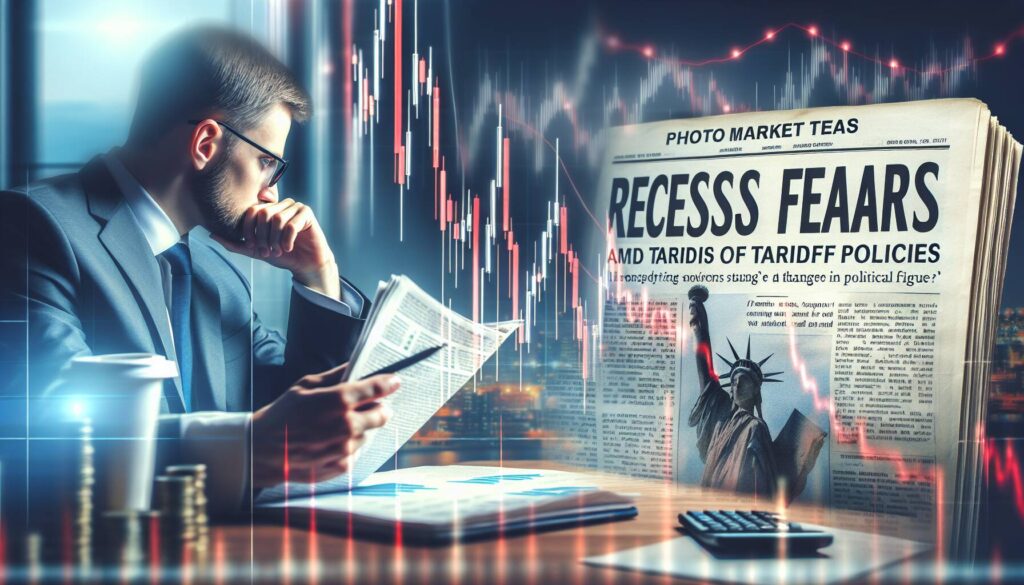As uncertainty looms over the U.S. economy, recent developments surrounding President Donald Trump’s new tariff plan have sparked fears of a recession. According to prediction platforms Polymarket and Kalshi, the likelihood of the U.S. slipping into a recession has surged, with Polymarket reporting that the chances have crossed the 50% mark for the first time in months. This shift follows an increase in the betting contract “US Recession in 2025,” which saw the value of ‘Yes’ shares rise sharply, indicating an escalated concern among traders.
The alarming economic outlook coincides with the unveiling of sweeping tariffs that impose a base rate of 10% on all imports, alongside higher rates targeting 60 nations, particularly China. Investors on Wall Street have reacted negatively, as reflected in the S&P 500 futures, which fell by 3%. Bitcoin and other cryptocurrencies also saw downward pressure, further amplifying worries in the digital asset space.
The new tariffs, set to take effect in early April, aim to address ongoing trade imbalances but could contribute to rising inflation and destabilize global trading relations. Countries like China and the European Union may retaliate, igniting fears of a trade war that could exacerbate economic volatility. Nevertheless, some analysts remain cautiously optimistic; UBS noted that while economic growth may slow, it does not predict a full-blown recession for the U.S., suggesting the economy could still grow by approximately 2% this year.
“The threat of further tariff escalation remains a key concern, but our economic forecasts do not call for a recession in the US,” wrote UBS in a recent blog post.
As these economic dynamics unfold, discussions about the Federal Reserve’s potential interest rate cuts are heating up. With rates traders anticipating a greater likelihood of easing measures in the coming months, some experts argue that while tariffs could initially dampen market sentiment, the long-term impacts may lead to a more favorable economic environment.

U.S. Recession Fears and Economic Impact
The current economic landscape is influenced by President Trump’s tariff plan, raising significant concerns about a potential recession. Here are the key points related to this topic:
- Rising Recession Predictions:
- Polymarket indicates a probability of over 50% for a U.S. recession this year.
- Kalshi’s predictions show a 54% chance for a recession in 2025.
- Financial Market Reactions:
- S&P 500 futures decreased by 3%, reflecting risk aversion.
- Cryptocurrencies like Bitcoin plunged 1.5% in response to recession fears.
- Tariff Implementation:
- New tariffs include a base rate of 10% on all imports, with increased rates on 60 nations.
- China faces a total levy of 54%, significantly impacting trade relations.
- Short-term Economic Effects:
- Tariffs may lead to domestic inflation and exacerbate global instability.
- Potential for retaliatory tariffs could escalate into a trade war.
- Potential for Economic Slowdown vs. Recession:
- Some analysts predict only a slowdown; UBS forecasts a 2% growth rate despite tariffs.
- Long-lasting damage to business sentiment could lead to unemployment, alarming the Fed.
- Market Sentiment and Fed Response:
- Expectations for Federal Reserve interest-rate cuts are increasing, potentially reversing initial market reactions.
- Tariffs are viewed as dovish, leading to possible easing of monetary policy.
The ramifications of these developments mean that readers need to be aware of how recession fears could impact spending habits, investment strategies, and overall economic stability.
Analyzing the Economic Landscape Amid U.S. Recession Fears
The recent prediction trends reflecting a rising likelihood of a U.S. recession have sent ripples through financial markets, following President Trump’s new tariff strategy. Platforms like Polymarket and Kalshi have spotlighted this heightened anxiety, indicating a critical shift in market sentiment. The potential economic downturn has ramifications not only for investors but also for businesses and policymakers across the board.
Competitive Advantages: The heightened focus on risk assessment tools like Polymarket and Kalshi provides a unique advantage to those looking to hedge their investments against possible downturns. By venturing into these prediction markets, traders gain early insights into shifting economic conditions, potentially allowing them to reposition their portfolios ahead of confirmations from authoritative bodies, such as the National Bureau of Economic Research. This can be particularly beneficial for agile investors and hedge funds looking to capitalize on market fluctuations during uncertain times.
Competitive Disadvantages: Conversely, the influx of recession fears could deter some investors, especially those who prefer a more risk-averse approach. The recent fall in S&P 500 futures and the dip in cryptocurrencies like bitcoin points to a broader risk-off sentiment among traders, which could exacerbate market volatility and create a cycle of caution. Small businesses and emerging entrepreneurs might find their financing options drying up as lenders tighten their criteria in response to increased economic uncertainty, potentially stifling innovation and growth.
Beneficiaries and Problematic Scenarios: Established financial institutions and savvy traders are likely to benefit from these prediction tools as they navigate the turbulent waters ahead. However, sectors reliant on steady consumer spending, such as retail and hospitality, stand at risk of widespread repercussions should recession fears translate into actual decreased consumer confidence. Moreover, a significant number of workers within vulnerable job sectors may face layoffs, pulling back on their spending abilities and thereby perpetuating the economic slowdown. Ultimately, the dynamic interplay between tariffs, inflation, and interest rates will play a critical role in determining the economic outlook, making it essential for all stakeholders to remain alert and adaptable in their strategies.

















